
 |
2007 Peru / Ecuador
Machu
Picchu,
|
 Cusco Cusco |
Quito  |
| With an elevation of 2600 meters
and a relentless tour guide, a visit to Machu Picchu can be
disorienting. And yet the whole area is only 400x100 meters; a mere 20th
of a sq km. This page expands on my own experience and orients
you to better enjoy your visit. Almost everything about Machu Picchu is speculation, although I will use the most common terms. It seems likely that the estate was a summer retreat for the Inca, that is, for the god-ruler himself. The agricultural areas seem insufficient to feed a fully occupied village throughout a year. |
| The map below is interactive.
The layers can be turned on and off. The first four tabs below the map
turn on selected layers. The fifth tab lets you turn them on and off
yourself. |
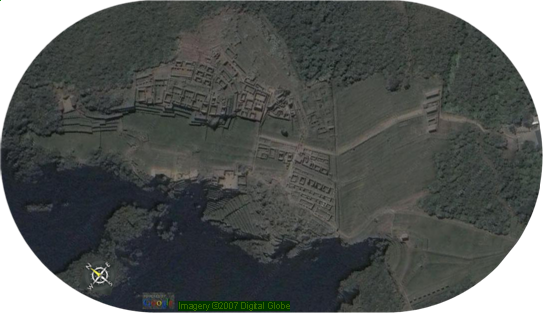
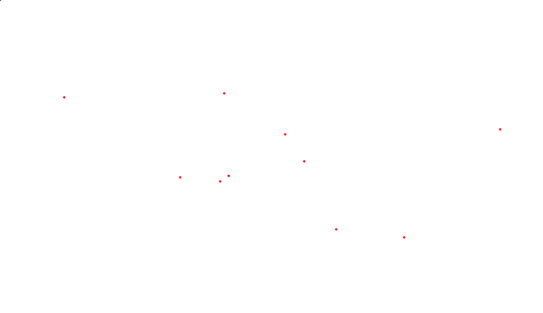
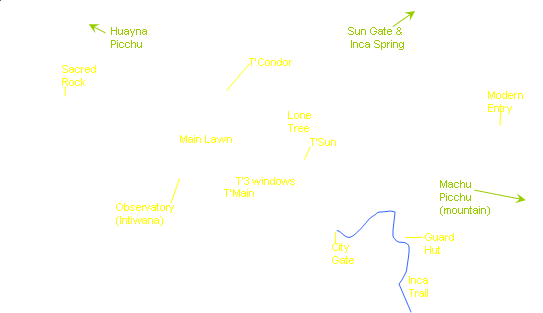
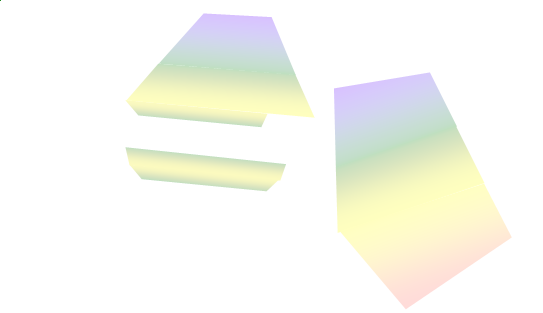
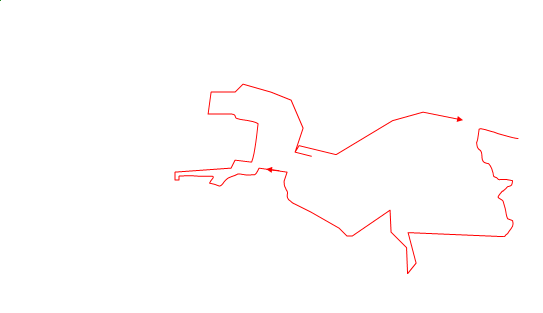
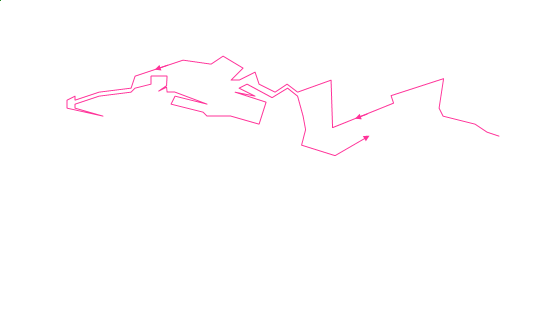
|
Image
adapted
from greatbuildings.com
|
| Overview Geography Landmarks Routes Map Toggles |
| Day
1. Anna led us up to the Guard Hut. Then down through the City
Gate and past the Quarry. We looked down on the Sun Temple and Proceded
to the Temple Plaza to view the Main Temple and the Temple of the Three
Windows. Then we climbed up to the observatory. After that we walked
along the west side of the Main Lawn and then cut over to the Temple of
the Condor. Returning to the west side, we visited the fountains in the
Royal Area. Finally back along the west of the Main Lawn and across the
Agricultural Zone to the entrance. Day 2. On my own, I decided to visit the east side and its Worker Zone. I traversed the lowest edge I could and took photos in three general directions: down the hill, toward Huayna Picchu, and towarrd Machu Picchu. I once again encountered the Temple of the Condor. Then I arrived at the entrance to the Huayna Picchu trail and had to be told that the Sacred Rock I was looking for was directly behind me where I stood. I returned along the upper edge of the east side. |
| Sunday, May 13, 2007 | |
|
From the guardian hut we walked down and into the religious zone: temple of three windows; sacrifice stones; sun temple below on the right; platform with hitching post to which the priests tied the sun to make it return after the solstice. Finally we walked back to the starting point by traversing the west side of the courtyard. With a detour to the lower east side to see the "temple of the condor". |
|
| More web links |
|
|
Here is a great annotated picture of Machu Picchu, looking south from Huayna Picchu. It does a good job of showing the slopes of the various areas. This is the best map of Machu Picchu that I found. This travel guide details a trip through M-P much like the one I took, and it is accompanied with another good map. This map links to cool 360º panoramas This site describes Machu Picchu in French and includes a semi-topgraphic map. The "Intihuatana" or observatory is a feature of every Incan religious site. It is supposed to be a hitching post to which the priests tied the sun to reverse its course at the solstices. The "Intimachy" noted on some maps has an alignment with the December solstice. The temple of the Sun has an alignment with the June solstice. http://www.waterhistory.org/histories/machupicchu/ Extol the virtues of Incan engineering, especially hydrological. has contour map of the area surrounding M-P, which includes the location of the Inca spring and aqueduct (both still operating). Mountain close on east is Putukusi. (2500 m) interactive model uses PolyWorks/IMView Map showing the landslide areas. |
|
| Copyright 2007, Zweibieren |
5 Sep 2007 11:57 PM
|
Page
maintained
by
Zweibieren  |